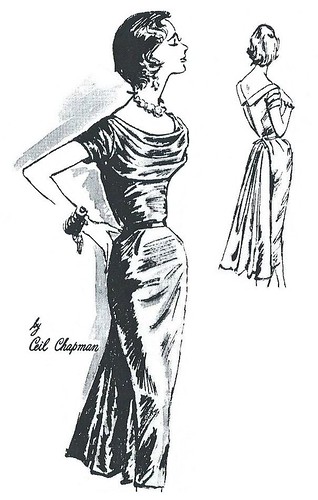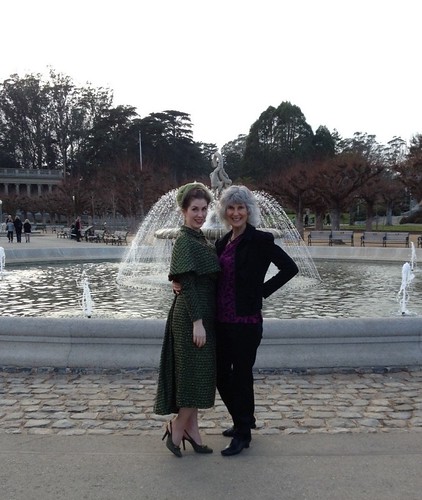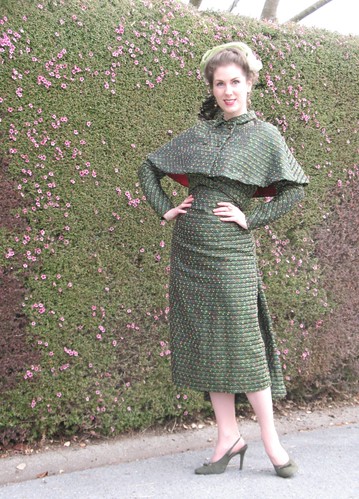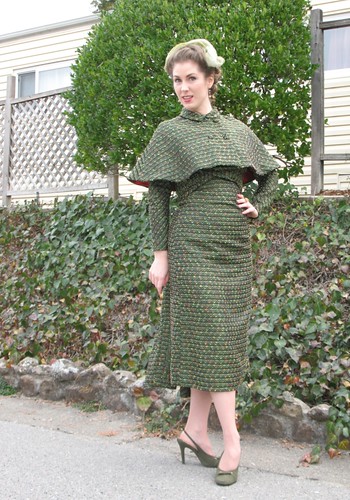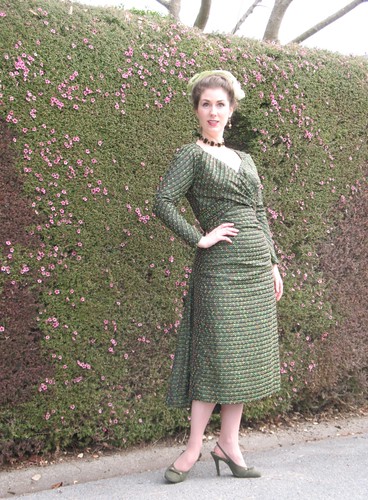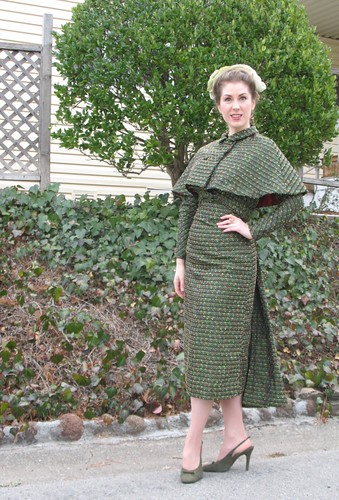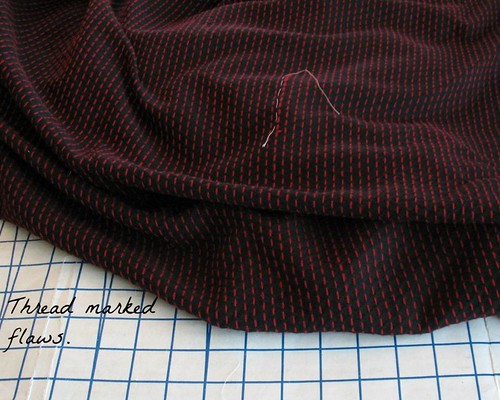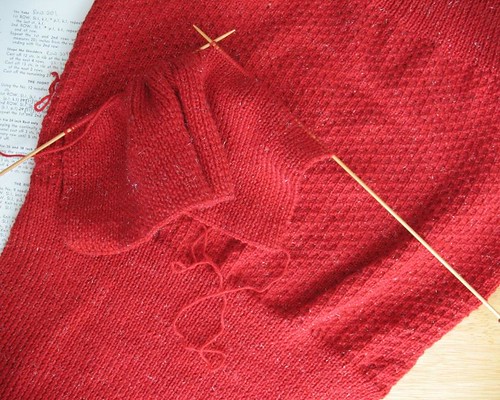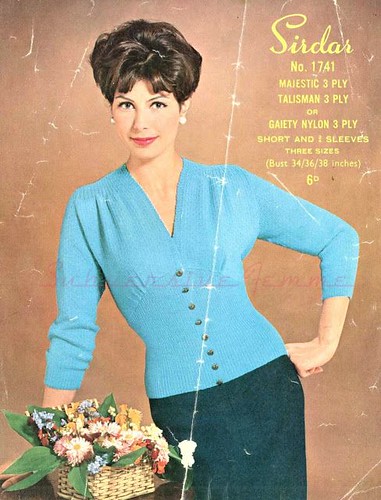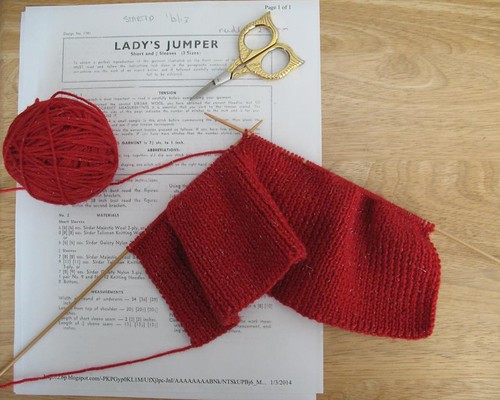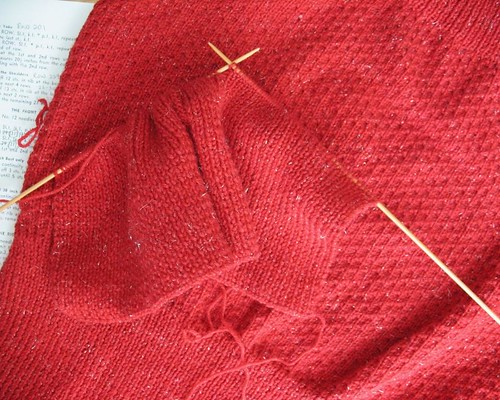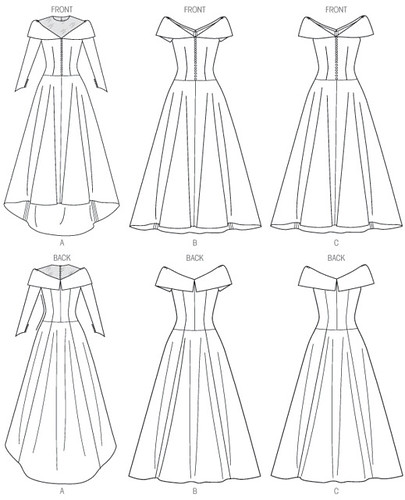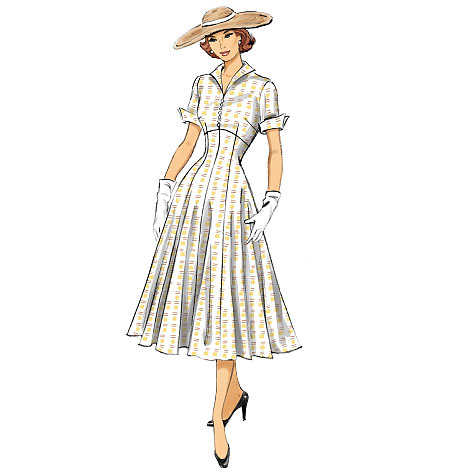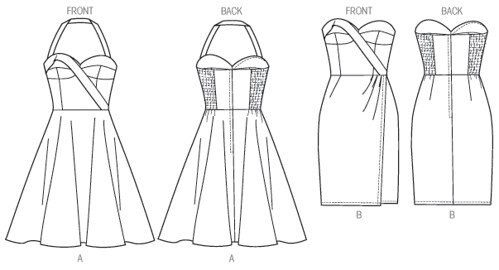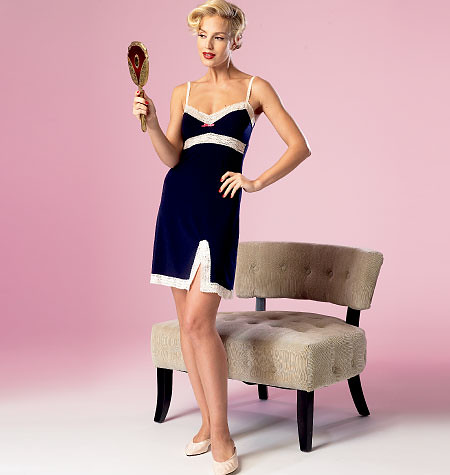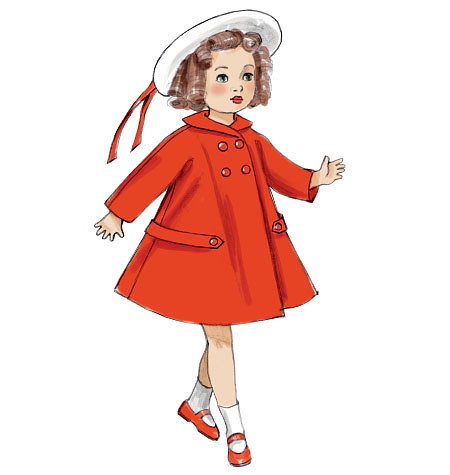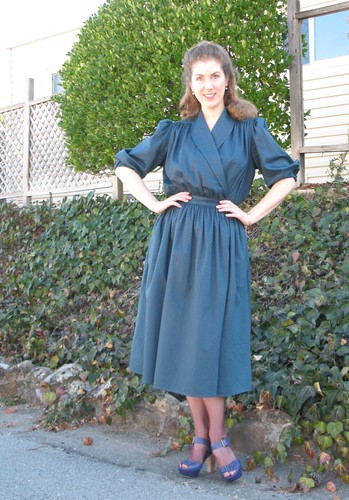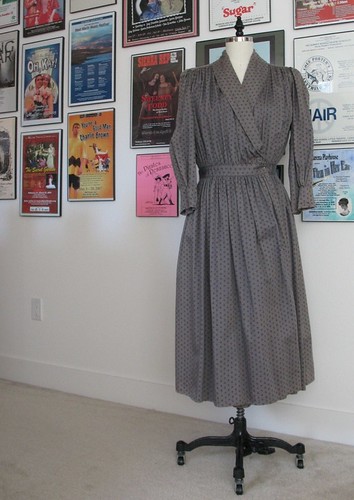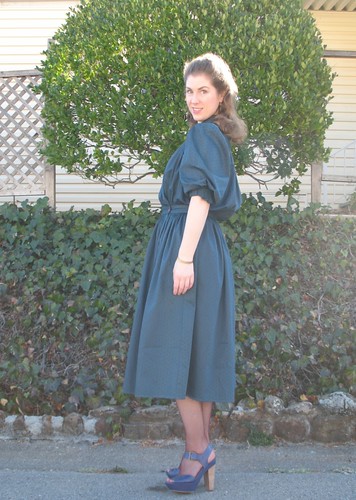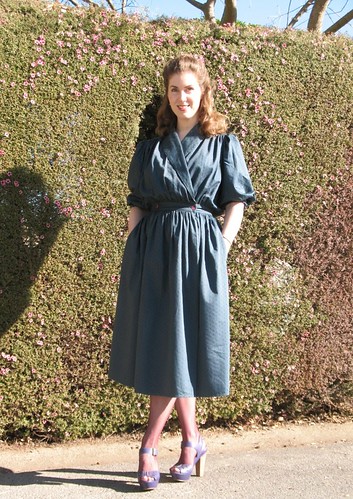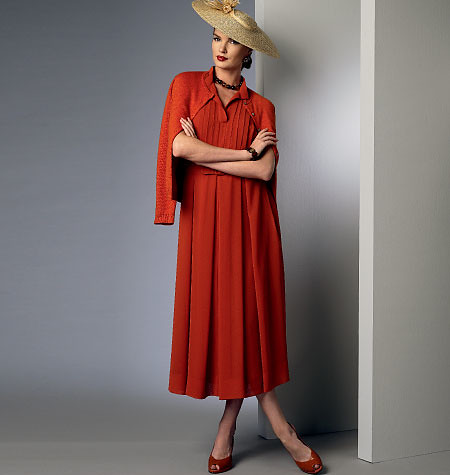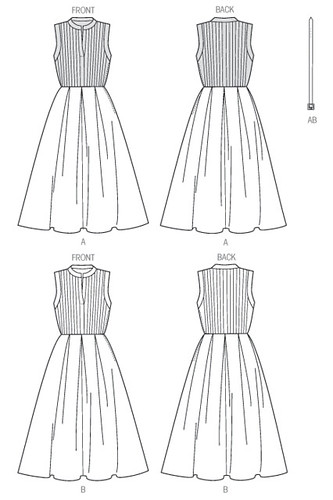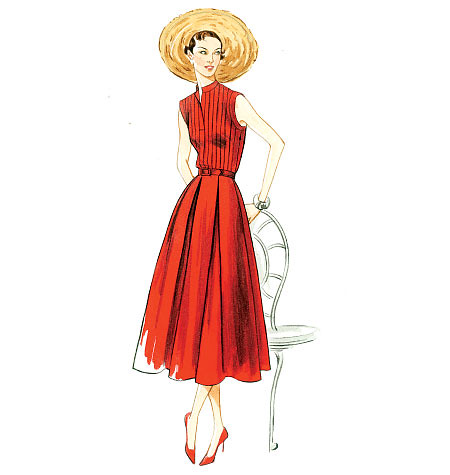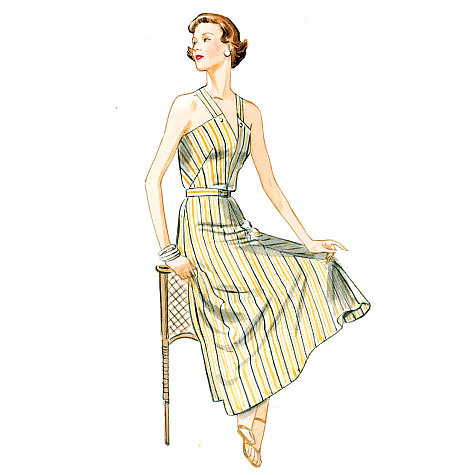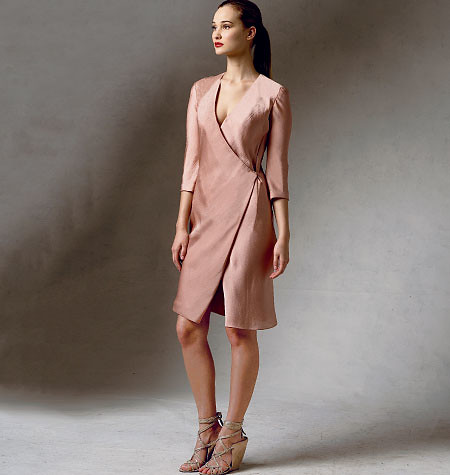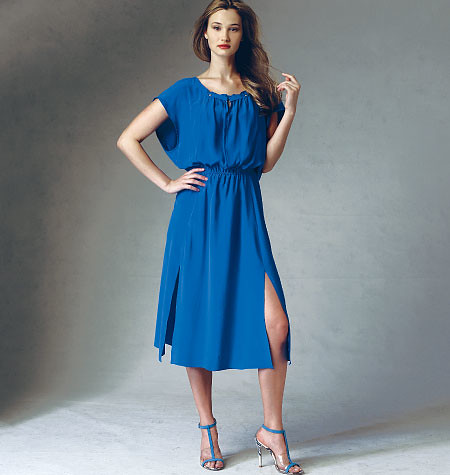After yesterday’s rant, I thought I would explain how I figured out the proper size pattern for my figure after years of guesswork.
 |
| The McCall Company Sizing Chart |
My very first apparel pattern purchase was McCall’s 8100. I ended up with a pattern that contained Sizes 8-10-12, although my measurements were probably something like 35-30-36
at the time and I expected that the finished dress might be on the small side.
The design has no zipper or button closure, but even so, it
is horrendously oversized. The finished
bust measurement on the pattern is 41.5” – that means they are allowing a
whopping 7.5” of wearing ease over and above the 34" full bust measurement for a standard Size 12. If you would
like to see the result, here is photographic evidence of the dress; the
tie-back design is the only reason it fit at all.
Sometime around 2008 I discovered PatternReview.com. Suddenly I was exploring a fabulous online
sewing community where thousands of individuals were well versed in a whole
new language of FBAs, SBAs, and UFOs.* I
had absolutely no clue what they were talking about!
In the ten years prior to finding the online sewing
community, I was busy making dresses and costumes, and worked with an
incredible costume designer in college where I picked up hundreds of random tips
and tricks. In the costume shop, I was
the girl to go to if you needed to get a knot out of a length of thread, or if
you needed a hem quickly hand stitched or a zipper unstuck during a quick
change. But I had never dealt with
fitting anyone other than myself. I
was capable of putting an entire garment together, but never had to
deal with choosing a size for someone or drafting a pattern.
After years of trial and error, I confirmed that my
frame was perfectly suited to a size 12 in Vogue/McCall/Butterick/Simplicity
contemporary patterns (exclusive of a couple of minor alterations). But why was that? My bust and hips got a bit larger, and my
waist smaller, but according to their fit chart, a Size 14 still looks
like it should be the best fit.
Over the years, I have learned that The Big 4 (McCalls, Butterick, Simplicity, & Vogue) generally have masses of excess ease built
into the designs. Vogue patterns give me less of a
problem in this regard, and Vogue designer patterns even less. The most common
exception to the over-ease rule is a strapless design – those follow the body
measurement chart quite closely.
So why do Size 14s turn out too big, especially around the
upper edge of the bodice? I am rather
long-waisted and usually add from ¾ to a full 1 inch to the torso length, have
a slight swayback, and my upper back is straight up and down without the
standard bit of forward slouch, but that does not account for the sizing problem.
Years and years into the sewing game, I started hearing
about something called the “upper bust” or “high bust” or "chest" measurement being the
thing that should determine which pattern size is appropriate, rather than the
three numbers given on the back of the envelope – who knew? - and where the heck are they hiding that number if it is so darn important?! This upper bust measurement, after all, gives a much more accurate
fit. Gaining or losing weight will not
significantly alter this measurement, just as losing twenty pounds does not
narrow wide shoulders, or vice versa. Altering
those areas can also be a bit of a nightmare because you have to deal with shoulder widths, necklines, and most importantly, the armscye, so starting off with a pattern that fits through this area
is much more important than the full bust, waistline, or hip measurements. For a dress maker, the full bust measurement
is probably the worst indicator of overall body size of a woman. Which is ironic, since many vintage patterns
are only stamped with that single measurement.
According to McCall’s chart, the upper bust measurement is
2” less than the full bust on their patterns (this is standard for most
patterns as they draft for a B cup, which equates to a 2” difference between the
high bust and full bust measurements).
My upper bust measurement is 34” which would put me in a size . . .14.
Aargh! That can’t be right?!
However, it takes more than four or five basic measurements
to create a standard bodice block and to describe a person’s complicated three dimensional
form. My upper torso seems to be
narrower than average for my size (having to take in just about every halter
design I have sewn up at the upper bodice has confirmed this fact for me).
 |
| And here, ladies and gentlemen, is the culprit: 3-4" of ease for a "fitted" dress - are they out of their minds?! |
Instead, it works much better for me to start with a Size 12, which fits through the shoulders and upper torso, and make adjustments such as adding length to a bodice, or width through the hips. As a dress enthusiast, I like to think of the
shoulders and neckline as the foundation of my garments – of course, a skirt or
pair of pants requires a different perspective (for those separates I start
with the hips and alter to fit the waist as necessary, and for strapless designs I use the waist as the foundation.)
Some new "Custom Fit" designs offer a range of cup sizes in a
single pattern envelope: A/B, C, D. While I am
technically a C cup these days, my attempts with the C cup bodice blocks have
been rather dismal - probably because my torso is shaped like more of a rectangle than an
inverted triangle. The extra ease given
to the C bodice turns out much too wide through the upper bodice/back area for me.
Vintage patterns are especially tricky because all you get
is a single size option. I generally
will only purchase vintage patterns with a 34" or 36” bust because I am lazy and
would rather spend my time sewing than grading pattern pieces. A 34" vintage pattern generally works as well as a Size 12 contemporary Vogue for me - that upper bust measurement is still at play and I rarely have to add inches for a bustline that measures three inches over the 34" sizing.
For better or worse, every single pattern design is going
have variations in ease chosen by the designer or the pattern drafter, which may or may not turn out just like the idealized illustration shown on the envelope. Whether or not those finished measurements are
appropriate for an individual body is what makes sewing challenging and a whole
lot of fun!
So I suppose the solution to finding the right size is
patience, and lots of trial and error - at least, that has been my experience! Oddly enough, that first guess was the right one for me (regardless of the horrid fit of
that first dress, and the changes in my body shape and measurements over the years, I keep coming back to a size 34).
Keep in mind that simple alterations like shortening or
lengthening bodice pieces, adding or subtracting width from a waist or hipline, and playing with full or small bust adjustments are much more likely to yield a
proper fit than blindly following a measurement chart that may or may not
contain your body measurements in a single size. It took some time for me to realize that dropping the waist seam down by one inch would also solve the fit through my hips by moving those curves into the proper place on my body.
And most important, remember that the full bust measurement on your pattern envelope is much less important than the upper bust. And I haven't a clue as to why they would not include it on a basic sizing chart!
*SBA: Small Bust Adjustment; FBA: Full Bust Adjustment; UFO: Unfinished
Object




